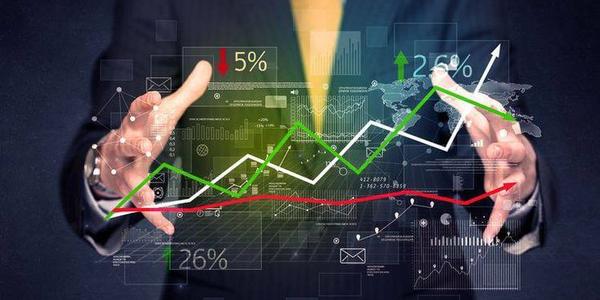A bold redefinition is underway as Crunchbase pivots from a trusted vault of historical startup data to an AI-powered engine that predicts private market events. The San Francisco company outlined a relaunch built on predictive models that can forecast fundraising rounds, acquisitions, and growth trajectories with striking accuracy. By leveraging a massive, multi-source dataset and patterns from tens of millions of users, Crunchbase aims to influence how investors and companies navigate private markets—where timing and foresight often separate winners from missed opportunities. The move signals what Crunchbase CEO Jager McConnell calls a fundamental shift in how data informs decision-making in venture and private equity.
Crunchbase’s pivot: from historical data to forward-looking AI predictions
Crucially, Crunchbase is reframing its identity. What began as a community-sourced repository of startup facts is transitioning into an AI-driven platform designed to forecast the next chapter in a company’s lifecycle. The company asserts that the traditional model—relying primarily on historical data—will be eclipsed by systems that synthesize vast volumes of real-time signals to anticipate future events. In a recent discussion with VentureBeat, McConnell framed the change as a rebirth of the business, insisting that the era of static, historical snapshots is coming to an end. He suggested that data providers whose value centers on past occurrences will see their relevance diminish as AI systems enhance the ability to project into tomorrow.
This strategic shift arrives at a moment when the market for data and analytics is increasingly exposed to AI-driven disruption. Crunchbase contends that conventional data providers face an existential threat because AI platforms can ingest, correlate, and reason over historical information much more efficiently—finding insights that were previously out of reach when data remained siloed or behind paywalls. The company argues that once data becomes accessible to the broader web and integrated into AI models, the intrinsic value of a static data footprint declines, since AI can combine public sources with other signals to yield deeper, more actionable conclusions. The result, Crunchbase maintains, is a landscape where the old model no longer suffices for discerning patterns or predicting outcomes with the speed and nuance desired by modern investors and business leaders.
The announcement marks a dramatic departure from Crunchbase’s 15-year reputation as a crowd-sourced provider of startup information. Instead of focusing on cataloging what has happened, the new approach emphasizes forecasting what will happen next. The leadership believes that predictive capabilities, supported by an expansive data network and sophisticated inference, can deliver a competitive edge in private markets where information asymmetries and timing are critical. As McConnell emphasizes, the company intends to use AI to move beyond merely reporting events to anticipating them, transforming how participants in private markets make strategic decisions.
Data architecture: how Crunchbase plans to predict the future
The core of Crunchbase’s new model rests on a triple foundation: user-contributed data, publicly available sources, and anonymized patterns of engagement from a broad user base. Megh Gautam, the company’s chief product officer, explains that the predictive power emerges from a distinctive mix rather than a single data source. He describes the system as “a unique combination of contributed data, captured data from public sources, and anonymized user engagement patterns.” In his view, the real magic lies in the breadth and depth of knowledge the platform has accumulated, which allows for generalized features rather than tuning to any one dataset.
Crunchbase reports that its predicted signals aggregate thousands of inputs, and the insights are crafted to generalize across multiple datasets. This approach aims to avoid overfitting to a particular source while maintaining robust predictive capability. The emphasis is on leveraging a wide spectrum of signals—ranging from fundraising activity to corporate acquisitions and growth indicators—to model likely future events. The company claims that this breadth enables the AI to recognize patterns that precede key milestones, thereby identifying opportunities and threats earlier than traditional methods.
The data strategy also hinges on practical privacy and ethics considerations. By incorporating anonymized engagement patterns and publicly available information, Crunchbase seeks to balance the need for rich predictive signals with responsible handling of user data. The framework is designed to respect privacy constraints while maximizing the signal-to-noise ratio essential for accurate forecasts. The approach implies that the platform’s value comes from how well it can interpret and synthesize signals rather than from any single source of truth.
Performance metrics: what the AI predicts and how well it does it
Crunchbase asserts that its fundraising predictions can reach up to 95% precision and 99% recall in backtesting. This means that the model identifies a high proportion of companies that eventually go on to raise funding and does so with relatively few false positives. For 12-month forecasts, the company reports accuracy in the high 70s percentile, suggesting a meaningful level of foresight over a year-long horizon. In addition to fundraising, the AI is positioned to forecast acquisitions, initial public offerings, company growth trajectories, and even potential layoffs. However, the company notes that some negative predictions may not be publicly disclosed to avoid causing harm to the companies involved.
The backtesting results indicate a strong alignment between predicted outcomes and realized events within the tested window. Still, Crunchbase acknowledges that real-world performance depends on ongoing data quality, timely updates, and the dynamic nature of markets. The system is designed to adapt as new signals emerge, allowing the platform to recalibrate its forecasts in response to evolving circumstances. In this way, the AI aims to support decision-makers with timely, high-probability insights rather than providing certainty about every outcome.
The emphasis on fundraising, while central, is framed as part of a broader suite of predictive capabilities. The platform is positioned to anticipate a range of business milestones, including mergers and acquisitions, IPO activity, corporate expansion, and workforce movements. To mitigate potential negative impacts of predictions, Crunchbase states that it will curate which signals are displayed publicly, particularly when forecasts could inadvertently harm a company’s reputation or competitive position. This careful curation reflects a broader commitment to responsible deployment of AI-generated insights.
The future of investing: AI-driven signals and human augmentation
The strategic shift aligns with growing investor interest in predictive signals as a complement to historical data. Gautam frames the challenge as answering a central question for users: what comes next? He notes that the platform’s users want to be first to market, and predictive intelligence is poised to support faster, more informed decision-making. The ambition is for Crunchbase to evolve into a platform that powers AI-driven investment decisions, potentially including automated investing systems and indexes focused on private market sectors. The long-term vision envisions a more proactive investment paradigm where models, rather than manual analysis alone, drive how portfolios are formed and adjusted.
McConnell underscores the transformative potential by suggesting that five years from now, traditional data companies could be unrecognizable unless they adapt. He contends that major incumbents will need to rethink their user interfaces and experiences to stay relevant in a landscape shaped by AI-enabled insights. The rhetoric highlights a broader industry reality: as AI makes data more actionable, the value proposition shifts from raw information toward actionable foresight and decision-support capabilities. Crunchbase’s narrative emphasizes that the future belongs to those who can turn data into precise, timely predictions that drive real outcomes for investors and companies alike.
The company envisions a rebranded, AI-powered ecosystem that integrates with customers’ models and workflows. Users could embed Crunchbase’s predictive signals into their internal systems, complementing their own analyses while relying on Crunchbase to maintain and curate the underlying data. The approach seeks to balance external, AI-derived insights with user-driven interpretation and context, ensuring that automated outputs remain aligned with human investment theses and risk tolerance. This augmentation philosophy—where AI assists rather than replaces human judgment—remains a central theme in Crunchbase’s messaging.
Market positioning: competition, skepticism, and the path to scale
Crunchbase’s pivot arrives amid a broader wave of interest in using AI to inform investment decisions. Industry analysts acknowledge that AI-driven forecasting can unlock significant efficiencies, but they also caution that markets remain skeptical of fully automated approaches. The company’s success will depend on sustaining high prediction accuracy as it scales, maintaining the integrity of its data assets, and earning trust from customers who must rely on AI-generated insights in high-stakes environments. The tension between automation and human expertise is a recurring thread, with Crunchbase championing augmentation over replacement. McConnell emphasizes that investments are inherently subjective, with thesis alignment and price discipline critical to realizing the platform’s promised value.
By positioning itself as a source of predictive signals rather than a blunt data dump, Crunchbase aims to carve out a niche that complements traditional market intelligence providers while standing at the forefront of AI-enabled investment tools. The relaunch to Crunchbase.ai signals a branding alignment with the new capabilities, signaling to customers that the platform is intentionally oriented toward forward-looking analysis rather than merely cataloging past events. The strategy also contemplates enabling customers to plug Crunchbase’s predictive outputs into their own models, enabling a modular approach to data-driven decision-making.
However, even as Crunchbase advances this vision, investors and practitioners remain cautious about fully automated systems in private markets. The skepticism centers on whether AI can consistently maintain high precision and recall at scale across diverse market conditions, and whether end users will trust machine-generated forecasts enough to base substantial investment decisions on them. The company acknowledges these concerns and frames its approach as an augmentation toolkit designed to enhance human judgment, not supplant it. The balance between automation and human oversight will likely shape adoption rates and practical utility as the platform expands its reach.
Launch strategy and deployment: Crunchbase.ai
The reimagined platform is slated to launch publicly under the Crunchbase.ai banner, signaling a new chapter in the company’s evolution. McConnell describes the moment as a precipice of transformative change in how investors evaluate private companies. He contends that the future advantage will go to those who can forecast what happens next rather than those who merely collect the most data. The emphasis on predictive capabilities is designed to differentiate Crunchbase in a crowded market where data quality, speed, and interpretability often determine a platform’s ultimate value.
The relaunch also reflects Crunchbase’s commitment to offering customers greater control over how predictive signals are integrated into their workflows. Rather than replacing internal models, the platform aspires to be a complementary layer that augments existing investment theses and decision-making processes. The company’s stance on user empowerment underscores a broader trend in AI-enabled finance: the fusion of robust data ecosystems with customizable, user-driven analytics.
For users, the promise is access to real-time, forward-looking indicators that can inform deal sourcing, due diligence, and portfolio construction. The platform’s ability to scale across sectors and geographies will be tested, particularly as it seeks to maintain accuracy in a dynamic private markets environment where fundraising, M&A activity, and growth trajectories can shift rapidly. Crunchbase’s strategy to preserve the value of its underlying data while offering predictive capabilities aims to create a hybrid offering that leverages the strength of its data assets with AI-driven insight generation.
Practical considerations: governance, ethics, and risk management
As Crunchbase expands into predictions, governance and risk management will be central to its credibility. The decision to withhold certain negative predictions from public view reflects a cautious approach to disclosing sensitive insights that could cause unintended consequences for companies and markets. The platform’s developers appear to be mindful of the potential harms that erroneous or misleading predictions could pose if disseminated without adequate context or safeguards. In this regard, the company’s emphasis on augmentation aligns with responsible AI practices that seek to support decision-making without creating undue exposure or hype around unverified forecasts.
From a risk perspective, any AI-driven forecasting system used in private markets must contend with data quality, model drift, and the potential for confounding signals. Crunchbase’s multi-source data strategy helps mitigate some of these risks by distributing reliance across several inputs, reducing the likelihood that a single data feed drives incorrect predictions. Yet, scaling the model will inevitably introduce new challenges related to data privacy, compliance, and the need to maintain transparent, auditable processes for prediction generation and updates.
Customer adoption will hinge on perceived value, reliability, and the ability to integrate Crunchbase’s signals into real-world investment workflows. Early adopters may test the platform on smaller pilots or in parallel with existing models to verify performance before fully embedding predictive insights into decision loops. The company’s messaging around augmentation rather than replacement will be important in reassuring users who may be wary of over-reliance on machine-generated forecasts. Clear governance around the publication of results, the handling of potential false positives, and the ongoing validation of models will be critical to building trust and encouraging broader adoption.
Vision for the next five years: what it means for data, AI, and private markets
Looking ahead, Crunchbase’s leadership envisions a future in which predictive signals become embedded across the investment ecosystem. McConnell’s provocative outlook suggests that traditional data companies must reinvent their user experience to survive in a landscape shaped by AI-driven insights. The company’s thesis is that the ability to forecast ahead—not just collect data—will define the leaders of the next wave of private-market analytics. This includes the possibility of automated investing systems and index frameworks built on Crunchbase’s predictive outputs, potentially enabling investors to track and respond to private-market dynamics with unprecedented speed.
The broader implication is a shift in how data-centric firms position themselves in a world where AI can extract actionable foresight from a global information network. Crunchbase argues that the era of static historical data is waning, replaced by a demand for forward-looking intelligence that can be operationalized within investor workflows. The idea is to transform Crunchbase from a data catalog into a predictive engine that informs not only deal sourcing but also strategic planning, portfolio construction, and risk assessment in private markets.
This vision also raises questions about how industry players will adapt to AI-enhanced decision-making. As more firms explore predictive analytics, the quality of inputs, the reliability of models, and the interpretability of outputs will become increasingly important. Investors and corporate leaders will need to weigh AI-generated forecasts against their own analyses, risk tolerances, and strategic objectives. Crunchbase positions itself as a facilitator of this alignment, offering signals that complement human judgment and enable more informed, timely decisions.
Conclusion
Crunchbase is undertaking a bold transformation, reimagining itself as an AI-powered predictor of private-market events rather than a repository of past happenstances. By combining contributed data, public sources, and anonymized user engagement patterns from a vast user base, the company aims to deliver forecasts with high precision and recall across fundraising, acquisitions, growth, and related milestones. The relaunch to Crunchbase.ai signals a commitment to forward-looking intelligence, with an emphasis on augmentation—supporting human decision-making rather than replacing it. As the platform scales, its ability to sustain accuracy, manage risk, and earn trust will determine its impact on how investors and companies navigate the private markets of the future. The coming years will reveal how predictive signals reshape deal sourcing, investment strategies, and the broader ecosystem that supports innovation in startup ecosystems worldwide.




